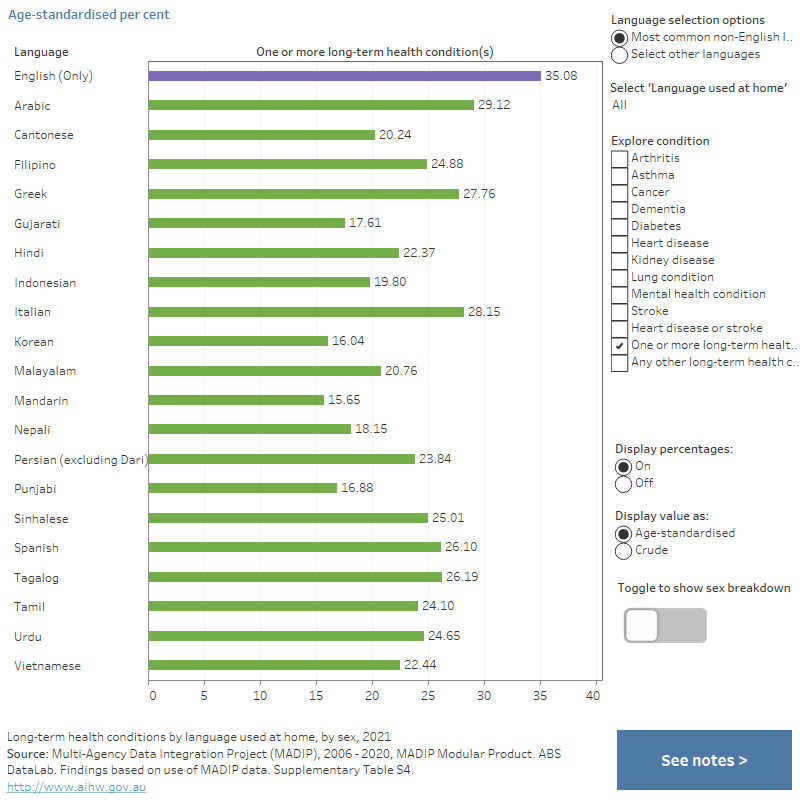Language used at home
Figure 4: Long-term health conditions by language used at home, by sex, 2021
This graph shows the crude and age-standardised percentages of people reporting long-term health conditions in the 2021 Census, by language used at home and sex. People who spoke Asian languages had a relatively higher prevalence of diabetes, dementia, heart disease, stroke and kidney disease than for other conditions, while people who spoke some European languages had a relatively higher prevalence of arthritis, asthma, lung condition, cancer and mental health condition. Among all language groups reported in the Census, sign languages (such as AusLan), Tongan and Maori language groups had a higher prevalence for many conditions. Overall, there were variations between each condition and language used at home.

Among the 20 most common non-English language groups, people who spoke Arabic (29%), Italian (28%), Greek (28%) and Tagalog (26%) had the highest prevalence of one or more long-term health condition(s), while those who spoke Punjabi (17%), Gujarati (18%) Korean (16%) and Mandarin (16%) had the lowest. People who spoke English (only) were more likely than the 20 most common non-English language population groups to report one or more long-term health condition(s) (35%).
People who spoke some specific non-English languages had a high prevalence of several long-term health conditions. For example, among the 20 most common non-English language groups, people who spoke:
- Urdu at home had the highest prevalence of diabetes (11%) and heart disease (4.8%)
- Arabic at home had the highest prevalence of kidney disease (1.2%) and stroke (1.0%).
People who spoke some Asian languages (such as Urdu, Tamil, Persian or Hindi) had a relatively higher prevalence of diabetes, dementia, heart disease, stroke and kidney disease than for other conditions, while people who spoke some European languages had a relatively higher prevalence of arthritis, asthma, lung conditions, cancer and mental health conditions.
When the results were compared between all languages used at home as reported in the 2021 Census, people who spoke:
- sign languages (such as Auslan) had a relatively high prevalence of many conditions including arthritis, asthma, cancer, lung conditions, and mental health conditions
- Tongan and Māori (Cook Island) languages had the highest prevalence of diabetes and kidney disease, respectively.


